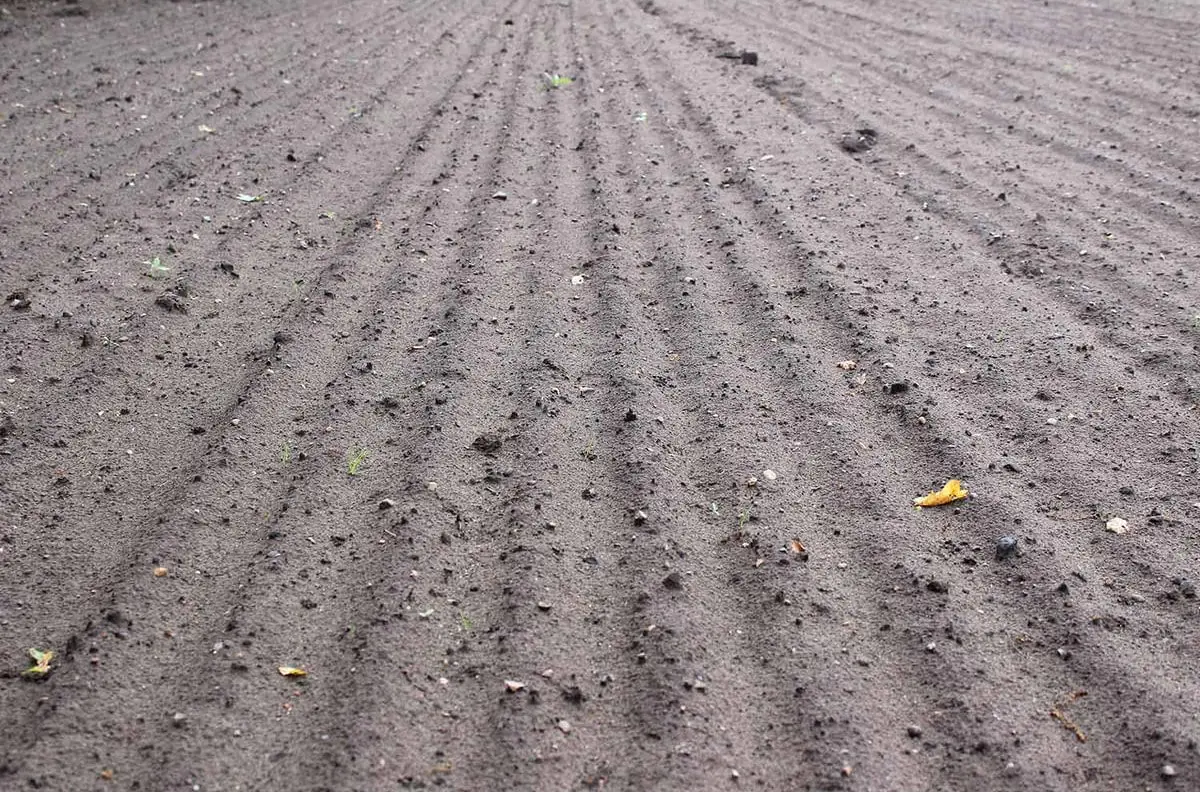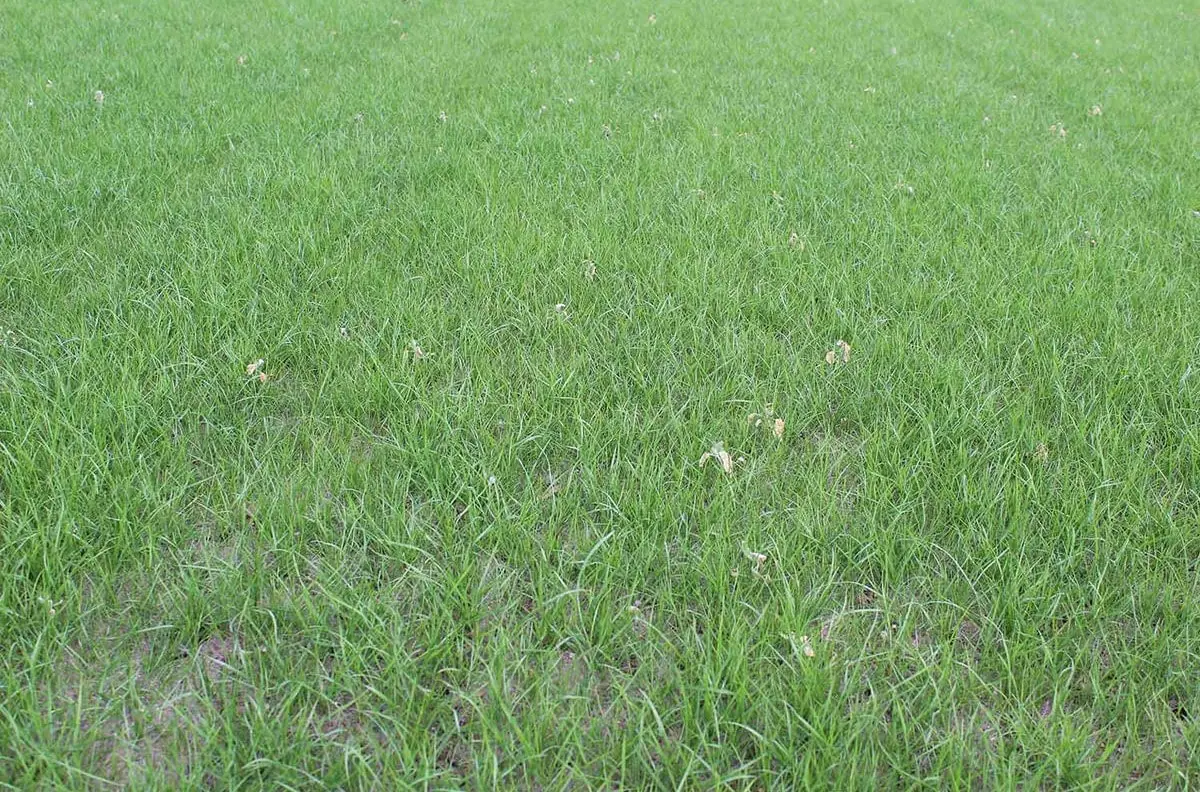Creating and maintaining a lawn
When it comes to domestic lawns, sowing grass seed can be both a rewarding and challenging task. This guide provides landscape architects and contractors with all the essential practices, including detailed specifications for sowing grass seed and lawn maintenance tips.

How to create a lawn
Preparation of seedbed
Preparation is the key to producing a high-quality lawn. The first operation is to clear any waste material, such as bricks and waste timber, either by hand or machine.
Weed control
If the area is already overgrown, a non-residual herbicide should be applied to control pernicious weeds such as docks. Repeat spraying may be needed to ensure a weed-free surface.
Recontouring the lawn
If recontouring of the site is required, it is essential to remove the topsoil and set it aside, being careful not to contaminate the topsoil with subsoil.
The subsoil can be contoured to achieve the required levels once clear of the topsoil. At this stage, any drainage work should be carried out. The use of heavy machinery should be avoided in wet weather to prevent severe compaction of the subsoil.
Once the required levels are achieved, the topsoil should be replaced to a depth of at least 100 mm. If the topsoil has a high clay content, horticultural-grade sand should be incorporated to aid drainage and air movement. If the soil is excessively sandy and free draining, the topsoil or organic matter is recommended to improve these conditions.
Once thoroughly mixed, the final levels are achieved by alternate hand-raking and heeling to create an even surface. Ideally, a slow-release fertiliser such as GSR Tri-Phase 18-3.5-8 applied at 35 g/m2 should be raked into the topsoil before sowing the seed.

Selecting your lawn seed mixture
The correct lawn seed mixture will depend on your situation. For example, for a high-grade ornamental lawn, it is recommended to use a fine grass mixture such as Luxury Lawn. This mixture will require careful maintenance.
Alternatively, if the lawn must withstand heavier wear, a lawn seed containing ryegrass should be considered, such as Family Lawn.
Sowing lawn seed
Sowing grass seed in spring
Lawn seed is best-sown in spring when temperatures are moderate, the soil is warm, and there are high moisture levels.
Generally, the best months for planting grass seed in spring in the UK are April, May and June. However, early autumn, such as late August and September, is another good time to sow.
Sowing grass seed in summer
You can sow seed in August and September, but the conditions would be drier and can dry out the seed. However, if you have irrigation or are happy to wait for rain, sowing grass seed in summer can be effective.
Once rain falls, germination can be remarkably rapid and let’s face it, we live in the UK, and it could rain anytime and frequently does.
Sowing at the correct dept
Sowing lawn seed at the correct depth is vital. The correct sowing depth is when the seed has good contact with the soil, is consistently moist and warm, and has a suitable anchorage once germination occurs. For most lawn seed mixtures, this is approximately 10 mm.
If sown too deep, you are making the plant work too hard to reach the surface, and it may weaken or not grow. If the seed is left on the surface, it can germinate, but there is a greater chance it will dry out or get too cold.
When it does germinate, it will only be anchored into the soil for the first few days by the newly emerged radicle (a single young root) and susceptible to breaking off. Too much sunlight can also have an inhibiting effect on the germination of seeds.

Spreading seed
Seed can be broadcast by hand or using a spreader.
Sowing lawn seed by spreader
A helpful tip to get even distribution using a spreader is to split the sowing rate in two and sow in two directions. For example, if the sowing rate is 50 g/m2, sow horizontally across your area at 25 g/m2 and then diagonally at 25 g/m2.
Sowing lawn seed by hand
If sowing grass seed by hand across a large area, then work out how much seed you need for the whole site and then split the seed into four, then divide the area into four (use string or lines of sand).
Then sow a quarter of the seed in each area. This approach prevents you from getting halfway across a large area and realising you are running out of seed.
Rake the seed lightly
Raking your grass seed into the ground is an efficient way to encourage germination.
Rake the area lightly until most of the seed is covered with soil, then lightly tread, or roll the area to firm the soil around the seeds.
Water the seedbed
For the best results, newly sown seed should be kept moist. As a general rule of thumb, you should water until just some particles of soil stick to your hand when you press your palm into it. This is because you want to avoid seeing pools of water lying on the surface.
If the area is manageable and you have access to irrigation, watering little and often while the seed is germinating is the correct approach.
If the area is too large to irrigate or you do not have access to irrigation, don’t worry. Nature will take its course, especially if sown in April, May or September when traditionally you should get some rain.
If you sow the seed and it does not rain, it is resilient and will remain in the soil until it rains. If it rains, you should see new shoots within 14 to 21 days.
Lawn maintenance tips
Watching a lawn deteriorate into a patchwork of dull greens, yellows and browns can be distressing, so this section outlines lawn maintenance methods for successful lawn establishment.
First lawn cut
The first lawn cut should be assessed on the height of the seedlings. Wait until the seedlings are approximately 50 mm, then lightly firm the soil by either penguin walking across the area or using a light roller or the roller on a lawn mower.
The idea of firming the soil is to ensure the new seedlings have a firm anchorage so that the first cut does not tug them. This is also when your correct seedbed preparation and sowing depth pay dividends.
Aim to firm the area lightly and not compact it. One of the above methods will suffice, so don’t be tempted to overdo it.

Mowing after the first cut
Wait a day or two and mow the new lawn to about one-third. For example, if the plants are at 50 mm, set your mower at 35 mm. If you let the plants grow longer, select the mow at an appropriately higher height to achieve a trim of about one-third of the plants.
If you don’t have a mower that you can set at a specific height, put it at the highest height possible, mow a small patch and assess if you think it is correct. If in doubt, go lightly for the first cut if you only take one-quarter rather than one-third. That is better than cutting the plants down and stressing them.
Gradually reduce your height to the required height over weeks. For example, if you have sown in the autumn, you may only get to cut the lawn a few times before stopping for the winter.
You can begin to use the lawn after the first cut, but heavy use should be avoided in the first year, especially if sown in the spring. Lawns planted in the autumn should tolerate more use the following summer.
Feeding the lawn
Spring lawn feed
A new lawn feed should be applied after the pre-seed fertiliser on a spring-sown lawn has lasted up to four weeks if you used a quick-release fertiliser like G1 Quick Start or 12 weeks if you used a slow-release fertiliser like GSR Tri-Phase.
A slow-release fertiliser is recommended because:
- It feeds the grass consistently and uniformly over twelve weeks.
- It avoids large flushes of growth followed by gluts between feeds.
- You can reduce nitrogen leaching in soil water and consequently into water systems.
- Even though the cost is more per bag, you apply them at half the rate because they are more efficient and are often more cost-effective.
Recommended fertiliser plans for lawn care in spring
| Month | Product | Usage Rate |
| Mid March | Novatec Premium | 35 g/m2 |
| Mid June | GSR Tri-Phase | 35 g/m2 |
Autumn lawn feed
With an autumn-sown lawn/grassed area, the fertiliser applied at the sowing time should be enough to see the lawn into winter. Recommended fertiliser plans for lawn care in autumn
| Month | Product | Usage Rate |
| Early mid-September | Novatec Premium | 35 g/m2 |
Mowing the lawn
A good height to maintain a grass sward is 15 mm, but this can be closer depending on the desired result.
Cylinder-type mower
Many prefer the cylinder-type mower to produce a high-quality lawn. This machine cuts by a scissor-type action and leaves a first-class striped finish. It is also preferred once the lawn is established to remove clippings. This will reduce the amount of dead material and keep the number of weeds and worms to a minimum.
However, this type of machine must be correctly adjusted and checked, preferably before each cut; otherwise, an uneven sward will result. To achieve the best results, the lawn must be cut at least once, possibly twice a week in the growing season.

Rotary mower
Another type of machine commonly used in lawn management is a rotary mower. These machines are more practical on uneven surfaces and domestic lawns. However, they produce a less “clean” cut using chopping action.
If you have questions about creating or maintaining a lawn, contact one of our experts.


